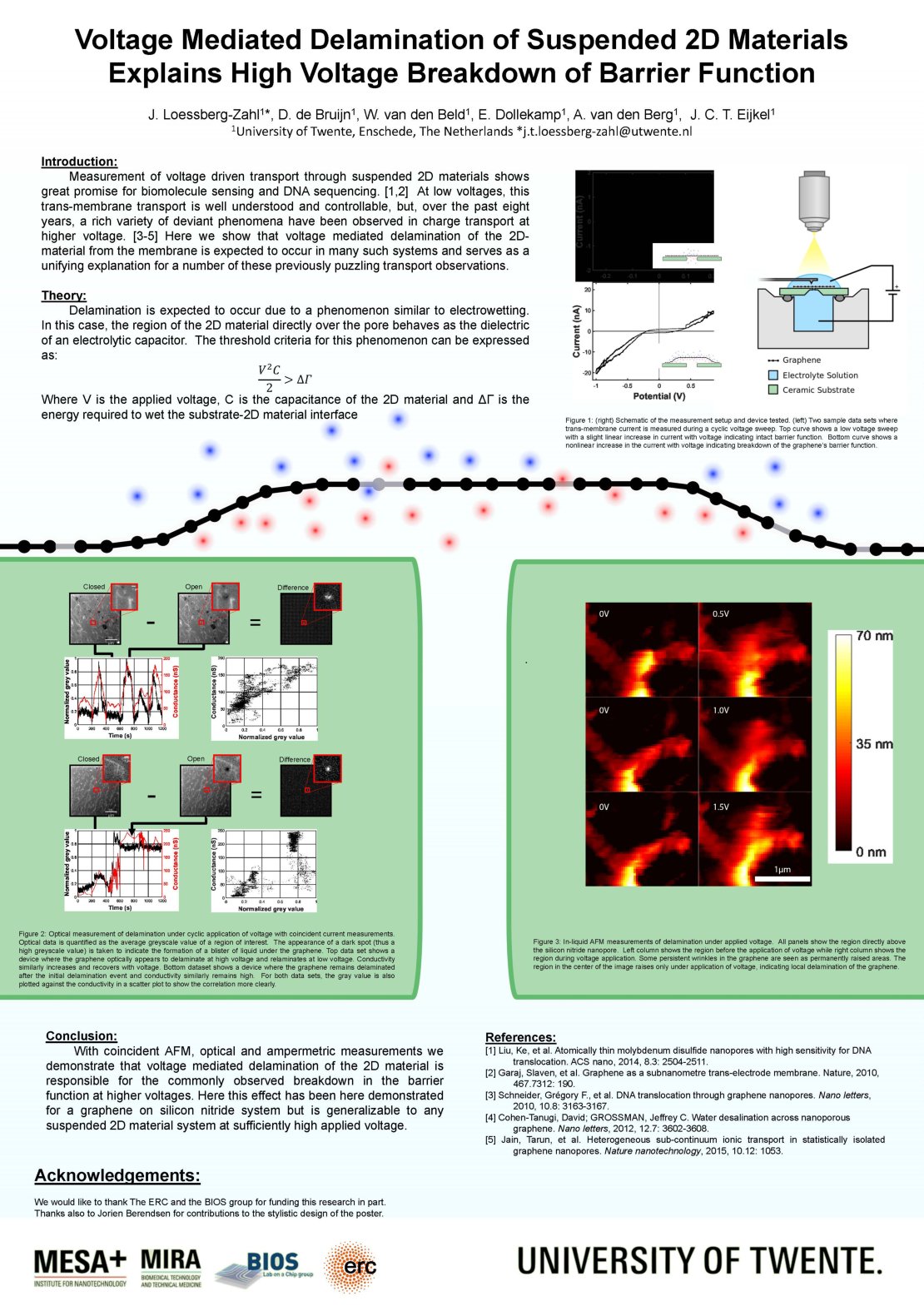Josh Loessberg-Zahl and Douwe de Bruin received a poster prize at MESA+ day for discovery and characterization of voltage mediated delamination in suspended 2D material systems. Suspended 2D material systems are used for biomolecule sensing and DNA sequencing. In these systems, the 2D material sits across a pore in a ceramic substrate and when a voltage is applied across substrate, the 2D material blocks the majority of the electrical current. The high electrical resistance of the 2D material is critical for reducing noise during bio molecule sensing. Unfortunately, under application of higher voltages, the resistance of the material is seen to break down catastrophically. Previous studies have written this off as electro-chemical breakdown of the graphene, but researchers at UTwente found the process to be reversible, indicating that something more complex was occurring.
The awarded work identifies voltage mediated delamination of the 2D material (Graphene) from the substrate (Silicon Nitride) as the phenomenon governing a commonly observed resistive breakdown. This phenomenon was hypothesized to occur when the pressure produced by charging on the 2D material overcomes the adhesion force that keeps it on the substrate. The 2D material then becomes unstuck and current can leak around it, causing the anomalously high current. When the voltage is removed, the 2D material can re-adhere to the substrate, and the resistance of the system recovers the original high value.
To confirm the occurrence of delamination, ampermetric, optical and AFM measurements were performed. By these measures, the researchers observed the formation and development of a tiny blister of liquid under the graphene when the voltage on the system raised above a certain threshold. As expected, the blister remains inflated until the voltage falls again below the threshold. Furthermore the area of this blister is highly correlated to the observed current, indicating that this phenomenon fully describes the observed resistive breakdown.
While this work focused on a graphene/silicon nitride system, the results should be broadly applicable to systems using suspended 2D materials and applied voltages. The authors hope that it will help designers of such systems to more deeply understand and full use the system’s dynamics, or at least avoid this failure mode in the future.






